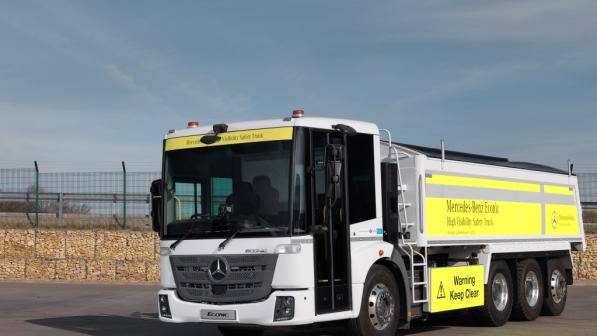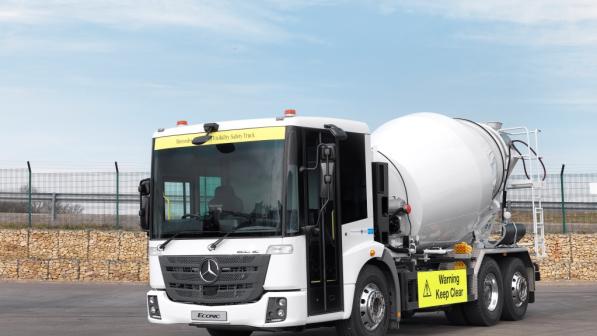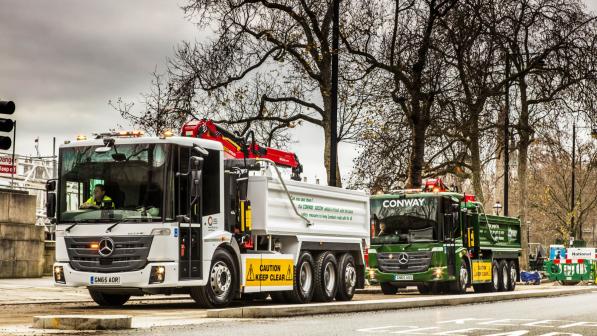The confidential bus driver and the safer cyclist

A ‘squabble’ of campaigners
Every time a cyclist or pedestrian is injured or killed by a bus or HGV there is a justifiable demand for action. Questions are variously asked about infrastructure, vehicle design, the culpability of the driver and the road justice system. A host of different opinions surface, the common theme of which is that something needs to change. There the collective agreement ends.
Don’t learn safety by accident
All too often, the circumstances of the latest tragedy bear a chilling resemblance to previous events: same road or junction, same manoeuvre, same driver, same safety failure. An investigation follows, but after the event.
Hindsight is a wonderful thing but foresight is better, especially when it comes to saving lives or some pain
William Blake, poet and painter
Sometimes it feels like, with road safety, the focus is the wrong way round: on preparing to deal with the consequences of problems rather than foreseeing those problems and attempting to prevent them from occurring. Prevention and investigation overlap, but are not the same.
The rest of the transport sector recognised long ago that avoiding incidents, reducing danger and saving lives required the involvement of everyone within each sector, not just management. This needs confidential reporting systems.
In the absence of these, however, employees are reluctant to disclose unsafe management practices, design failings or safety concerns regarding colleagues. They fear the personal consequences.
CIRAS on the buses
Following the Ladbroke Grove rail disaster in 1999, a confidential incident reporting and analysis system (CIRAS) was extended to include the entire UK rail system. CHIRPS, a similar scheme, was already and remains in operation in the aviation and maritime industries.
Any rail industry employee can make a confidential report to CIRAS regarding health and safety concerns, enabling CIRAS to take up those issues directly with the employer.
On 4 January 2016, the London bus network will become the first in the UK to adopt a confidential reporting scheme for employees. Transport for London (TfL) has announced that all TfL bus drivers and personnel working under TfL contracts will be included within the CIRAS scheme.
For the first time, London bus drivers will be able to raise safety concerns independently and confidentially, with the expectation that CIRAS will attempt to resolve those issues with the bus companies concerned, and hopefully prevent the repetition of incidents with similar or identical causes. Once may be unfortunate, but twice appears culpably careless.
Where London leads
CIRAS for London bus drivers is, however, not just a London bus story. It is an opportunity to completely change the approach taken nationally to reducing road danger from public service vehicles (PSVs) and HGVs.
Most of TfL’s bus subcontractors (such as Arriva, Go-Ahead and Stagecoach) operate bus routes in other cities and areas of the country. Once a safety and danger prevention system has been introduced in London, a question their employees outside London and campaigners can ask is ‘why should CIRAS not be extended to all bus drivers nationally’?
Perhaps more important for cyclists is the opportunity to extend CIRAS to those vehicles which present the greatest risk to cyclists: HGVs.
Safety isn’t expensive; it’s priceless
Three cyclists have been killed in London by HGVs operated by TfL and Crossrail since November 2013. When Crossrail services eventually commence in late 2018, all of its rail operations staff will have access to CIRAS. This is something currently denied to its HGV operators during construction, despite the fact that HGVs are statistically the most dangerous vehicles under contract to TfL.
As a cyclist in London, the risk of being involved in a fatal incident with an HGV is three times higher than a bus, and five times higher in Inner London. Adopting CIRAS for bus contractors, and continuing to exclude a higher-risk contractor, makes no logical or health-and-safety sense for TfL, particularly when it has led the CLoCS initiative (Construction Logistics and Cycling Safety).
Questions have already been asked within the London Assembly about extending CIRAS to HGVs, and there is pressure for further change. If HGV contractors on major public contracts such as Crossrail are required to sign up to CLoCS, it should not be a major step to either extend CLoCS to include CIRAS, or for the adoption of CIRAS to be an additional contractual requirement.
Better late than never
TfL has been criticised for delays in adopting CIRAS within its bus network. Cycle campaigners also list numerous TfL failings regarding ‘blue paint’ superhighways, delays in redesigning dangerous infrastructure and more.
But hats off to TfL. Overdue or not, the organisation is the first to introduce a confidential reporting system to the road network. If it has the courage to extend that to its HGV contractors, this could be the catalyst for CIRAS to be extended to HGV fleets working under public contracts throughout the UK.
To appreciate the potential safety advantages of a UK-wide extension of CIRAS for PSVs and HGVs, you only need to look at the concerns London bus drivers have been identifying while campaigning for CIRAS.
They were doing this largely anonymously via The Bus Stops Here blog, because they were unable to raise these concerns directly with their employers for fear of disciplinary action or employment consequences, which is, after danger reduction, CIRAS’s raison d'être.
Paper doesn’t save people, people save people
The safety concerns raised by London bus drivers include the following:
1. TFL uses Excess Waiting Time (EWT) targets to determine the level of payments to bus contractors. The company risks losing money if the buses do not arrive at regular intervals. However, it also wants the drivers to keep those gaps between the buses. The drivers say they feel under pressure to either speed up or slow down to maintain perfect bus spacing, avoid company fines and disciplinary action.
Drivers have claimed this creates an environment of urgency, prioritises performance over safety, increases road danger, and is a system perfectly aligned to lead to deaths and injuries.
The campaign groups Stop Killing Cyclists and Road Danger Reduction Forum both sought manifesto commitments from the London Mayoral candidates to remove those targets, and similar paid by timed delivery regimes for HGVs. CIRAS for HGV operators would enable drivers to confidentially report any safety concerns arising from their delivery, time and performance targets.
2. TfL bus drivers say they dare not report the fact that they have driven tired or have fallen asleep at the wheel. They fear instant dismissal if the camera footage from within the cab is checked, and they are seen to have dozed off while driving. So they say nothing, or resort to posting on an anonymous blog.
Anyone who has worked shifts knows the potential difficulties of alternating shifts and the impact on sleep patterns, but most of us don’t drive a 10-tonne vehicle for a job.
If bus drivers are raising serious concerns about the frequency with which their shift patterns are changed and the implications in terms of driving whilst fatigued, this is exactly the sort of management concern which drivers should be able to take to CIRAS.
3. If you’ve ever shouted at a London bus driver, accusing them of being blind, you might be surprised to discover that their answer is ‘yes, I’m driving blind’. That’s the claim of some drivers who blame defective mirrors which provide only a one angle view.
They contrast the strict enforcement of the larger multiple angle HGV mirrors, and cast an envious eye to both the heated and Cyclops mirrors used by long distance coach operators, who don’t have to stop 40-50 times in one journey.
Mirrors; cameras in cabs; modern safety developments: all design and visibility issues impacting on safety which bus drivers feel unable to raise with their employers. Why have we not heard more about these design failings previously?
The safest risk is the one you didn’t take
These safety concerns regarding contractual requirements, targets, vehicle design and shift management are but brief examples of how, with London buses, the adoption of CIRAS could yield significant road safety benefits, particularly for vulnerable road users. Applied nationally and to HGVs, CIRAS could potentially provide a means whereby employees can raise concerns regarding:
- Managers exerting pressure regarding performance targets, working hours, tachograph or other issues with safety implications
- Fellow workers who present a risk (think Harry Clark and the Glasgow Bin Lorry incident)
- Proposed routes in busy urban areas, training and compliance issues, journey times and scheduling around rush hour and so on
The list above is not exhaustive. The point is that CIRAS offers an opportunity to move the PSV and HGV industry from a box-ticking compliance culture to a more robust and auditable safety culture.
Prevention can also feed into regulation. Once HGV operators on major public contracts are required to adopt CIRAS, Traffic Commissioners (HGV regulators) might potentially be open to considering the adoption of CIRAS as a licence requirement on new HGV operator licence applications.
But change has to start somewhere, and the first step is the hardest. TfL’s seemingly small step with London buses is to be applauded and encouraged.




